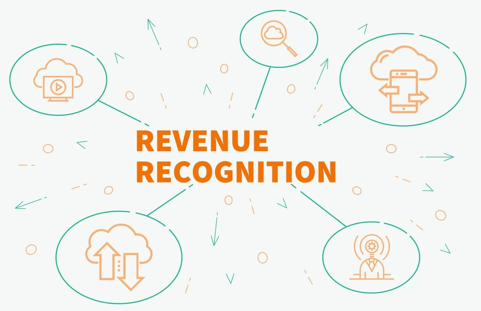How Different Revenue Recognition Methods Affect Financial Statements

All businesses have to deal with the process of revenue recognition. This process can be confusing for business owners. It’s important to understand how different methods can affect your financial statements.
In this definitive guide, we will discuss the three most common revenue recognition methods: cash basis, accrual basis, and modified accrual basis. We will also look at the benefits and drawbacks of each method so that you can make an informed decision about which one is best for your business!
What are Revenue Recognition Methods
Revenue recognition methods are how businesses account for revenue. The most common method is accrual basis accounting, which recognizes revenue when it is earned, regardless of when the money is received.
Another method is cash basis accounting, which recognizes revenue only when the money is received.
There are a few different revenue recognition methods, but accrual basis accounting is by far the most common. This method recognizes revenue when it is earned, regardless of when the money is received.
That means that if you sell something on credit, you can still record the sale immediately, even though you won’t receive payment until later.
Cash basis accounting is less common, but it’s sometimes used for small businesses or businesses with simple financials. This method only recognizes revenue when the money is received, so if you sell something on credit, you can’t record the sale until you receive payment.
How Different Revenue Recognition Methods Affect Financial Statements?
Different revenue recognition methods can have a significant impact on a company’s financial statements. The most common methods are the accrual method and the cash method.
The accrual method recognizes revenue when it is earned, regardless of when the money is received. This means that revenue is recognized as soon as a product is shipped or service is provided.
The cash method, on the other hand, recognizes revenue only when the money is received.
Accrual Method
The accrual method is generally thought to be more accurate because it recognizes revenue when it is earned, rather than when the money is received.
This means that all revenue and expenses are recognized in the period in which they occur. The main advantage of this method is that it provides a more accurate picture of a company’s financial position at any given time.
The main disadvantage of the accrual method is that it can be more difficult to track and manage. This is because all revenue and expenses must be recorded in the accounting records, even if the money has not yet been received or paid.
Cash Method
The cash method is generally thought to be less accurate because it only recognizes revenue when the money is received. This means that some revenue and expenses may not be recognized until after they have occurred.
The main advantage of this method is that it is easier to track and manage. The main disadvantage of this method is that it does not provide a complete picture of a company’s financial position at any given time.
Different companies will use different methods of revenue recognition depending on their business model and what works best for them.
It is important to understand how these methods work to correctly interpret a company’s financial statements.
Get Help From Case Study
Different revenue recognition methods can have a significant impact on financial statements. For example, accounting for the iPhone at Apple Inc. had a big impact on the company’s financial statements.
iPhone at Apple inc Case Solution can be very helpful in understanding how different accounting methods can affect financial statements. If you are working on a case study that involves revenue recognition, be sure to get help from an expert.

A good resource is “How Different Revenue Recognition Methods Affect Financial Statements” by Jane E. Adams. This case study provides detailed information on how different accounting methods can affect financial statements.
It is an excellent resource for anyone who wants to understand more about accounting for revenue recognition.
When you are finished with your case study, be sure to share it with your accounting tutor or professor. They can provide valuable feedback and help you improve your understanding of accounting for revenue recognition.
With their help, you will be able to produce a high-quality case study that will be beneficial to your future career.
Conclusion
Revenue recognition is a critical part of the financial statement process, and it’s important to understand how different methods can affect your company’s bottom line. We hope this guide has helped explain the differences between the four most common revenue recognition methods.
If you have any questions or want more information, please don’t hesitate to reach out to us. We’re always happy to help our clients navigate these complex topics and find the best solution for their business.




